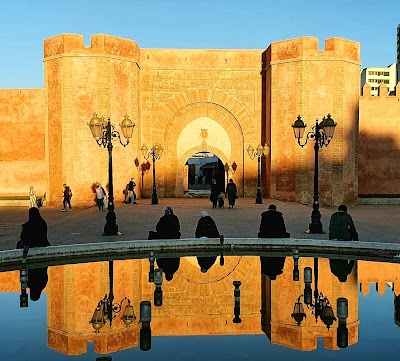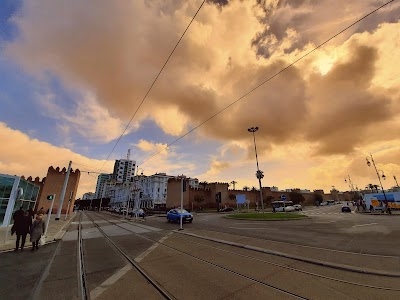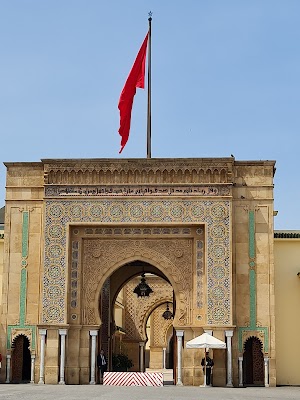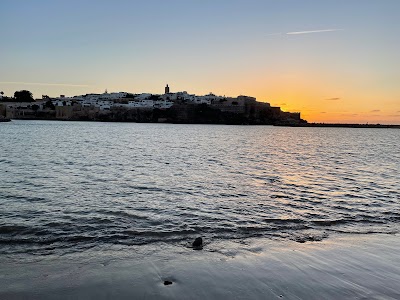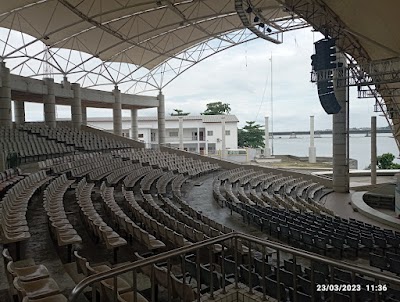Bab al-Had (Bab al-Had)
Overview
Discovering Bab al-Had: A Gateway to History
Bab al-Had, also known as Bab Laalou, is a historic gateway nestled in the vibrant city of Rabat, the capital of Morocco. While Rabat boasts a wealth of attractions, Bab al-Had stands out for its captivating blend of historical significance and cultural charm, making it a must-visit for travelers.
Dating back to the 12th century, Bab al-Had was built during the Almohad dynasty, a time when sultans fortified their cities with impressive walls and gates. The name "Bab al-Had," meaning "Sunday Gate," pays homage to the lively market that thrived here every Sunday. As a primary entry point into the medina, Rabat's old city, this gate played a vital role in both trade and defense.
Architecturally, Bab al-Had is a stunning example of Islamic design, showcasing the grandeur and intricate detailing characteristic of the era. Traditional Almohad elements such as horseshoe arches, geometric patterns, and calligraphic inscriptions are prominent features. These details not only highlight the artistic mastery of the time but also provide a glimpse into the remarkable craftsmanship that defined the period.
As you approach Bab al-Had, the imposing structure commands attention. The massive stone walls and grand archway evoke a sense of awe. Historically, this gate was part of a defensive barrier that safeguarded the medina from potential invaders. Standing here, you can almost envision the bustling activity of ancient traders, guards, and townsfolk, each contributing to the vibrant tapestry of Rabat's rich history.
In contemporary times, Bab al-Had remains a lively locale, merging its historical charm with modern vibrancy. The surrounding area is brimming with local life, offering visitors an authentic taste of Moroccan culture. Market stalls overflow with colorful textiles, traditional ceramics, aromatic spices, and freshly baked goods. A stroll through this market is not just a shopping experience but a sensory delight, providing a chance to purchase unique souvenirs.
Beyond its daily life, Bab al-Had serves as a hub for various cultural tours that delve into Rabat's rich heritage. Knowledgeable local guides share fascinating anecdotes and lesser-known facts, enriching the visitor experience. For instance, did you know that Bab al-Had's strategic location was crucial not only for protection but also for controlling vital trade routes that contributed to the city's economic prosperity?
Moreover, Bab al-Had's prime location offers easy access to other notable attractions within the medina and beyond. Just a short walk away is the iconic Hassan Tower, an unfinished minaret from an ambitious mosque project initiated by Sultan Yacoub al-Mansour in the 12th century. Close by, you’ll also find the Mausoleum of Mohammed V, an exquisite resting place for the Moroccan king and his two sons, renowned for its stunning Moroccan craftsmanship, including intricate zellij tilework and marble floors.
For those interested in the modern aspects of Rabat, the neighborhood surrounding Bab al-Had offers a lively mix of cafes, restaurants, and shops, making it an ideal spot for a leisurely break. Here, you can savor traditional Moroccan dishes like tagine and couscous or simply unwind with a cup of mint tea while observing the daily rhythms of local life.
Bab al-Had is not merely a historical site; it is a living monument that continues to play an integral role in the cultural and social fabric of Rabat. As you explore, take time to appreciate its enduring beauty and the layers of history it represents. Whether you're a history buff, a culture seeker, or a curious traveler, Bab al-Had offers an engaging glimpse into the soul of Rabat and the broader narrative of Morocco.
In conclusion, a visit to Bab al-Had is a journey through time, providing invaluable insights into the historical, cultural, and architectural heritage of Rabat. From its impressive 12th-century origins to its present-day vibrancy, Bab al-Had remains a testament to the city's enduring allure. So, when you find yourself in Rabat, be sure to step through this majestic gateway and immerse yourself in the rich tapestry of Moroccan history.


